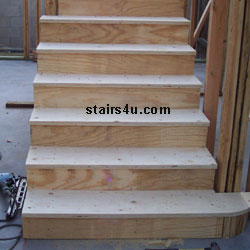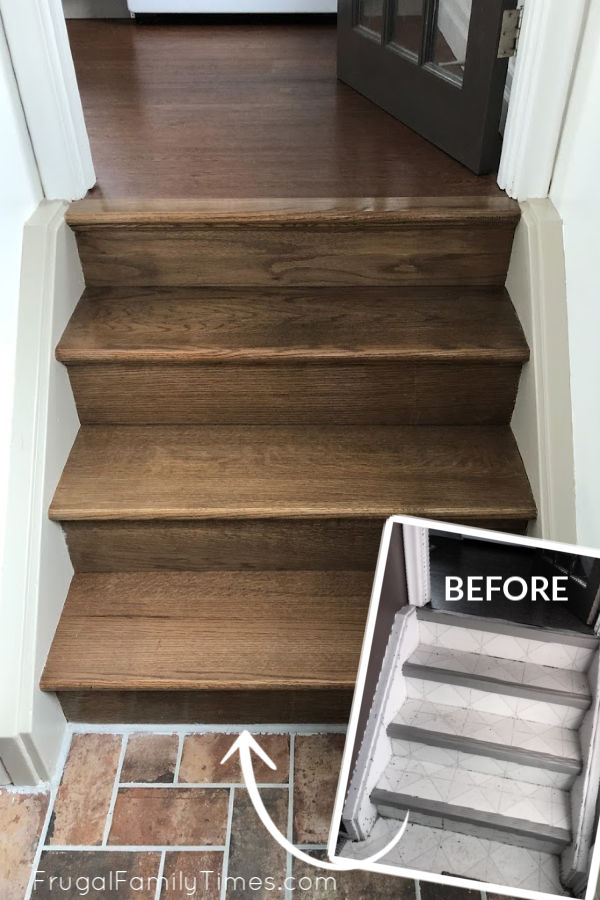Can you use plywood for stair treads? If you’ve ever wondered about this, you’ve come to the right place! Let’s dive into this intriguing question and find out if plywood is a suitable material for your stair treads.
When it comes to choosing the right materials for your stairs, it’s essential to consider factors such as durability, safety, and aesthetics. Plywood might seem like a cost-effective option, but is it the best choice for your stair treads? Let’s explore the pros and cons to help you make an informed decision.
So, if you’re curious about whether you can use plywood for stair treads, keep reading to discover everything you need to know about this topic!

Can You Use Plywood for Stair Treads? Pros, Cons, and Tips
When it comes to constructing or renovating stairs, one crucial element to consider is the choice of material for the stair treads. While traditional options like hardwood and carpeting are commonly used, there is another alternative worth exploring: plywood. In this article, we will delve into whether or not you can use plywood for stair treads, discussing the pros, cons, and providing valuable tips for those considering this option.
Benefits of Using Plywood for Stair Treads
Plywood offers several benefits that make it a viable option for stair treads:
1. Cost-Effective:
One of the main advantages of using plywood for stair treads is its affordability. Plywood is generally less expensive than solid wood or other materials commonly used for stair treads. This can be particularly advantageous for those on a tight budget.
Furthermore, plywood is available in different grades and thicknesses, allowing you to choose a cost-effective option that suits your specific needs.
2. Durability:
Contrary to what some might believe, plywood is a remarkably durable material. Made by layering thin plies of wood, plywood boasts strength and stability that rivals traditional materials. When properly sealed and finished, plywood can withstand heavy foot traffic and last for many years to come.
If you’re concerned about wear and tear, you can opt for higher-grade plywood or apply a protective finish to enhance its lifespan.
3. Versatility:
Plywood is highly versatile, meaning it can accommodate various design preferences. It can be easily cut into custom shapes and sizes to fit any staircase design, whether straight, spiral, or curved. Additionally, plywood can be stained, painted, or covered with finishing materials to match the aesthetic of your space.
With plywood, you have the freedom to unleash your creativity and achieve a unique look for your stairs without breaking the bank.
4. Ease of Installation:
Compared to some other materials, plywood is relatively easy to install as stair treads. It can be secured to the stairs using nails, screws, or construction adhesive. Additionally, the uniformity of plywood makes it simpler to cut and fit precisely.
If you’re a DIY enthusiast, using plywood for stair treads can be a satisfying and rewarding project that you can tackle on your own.
5. Sustainable Choice:
Plywood is an eco-friendly choice for stair treads due to its manufacturing process. It is made from thin layers of wood veneers sourced from sustainable forests. Choosing plywood over traditional solid wood options helps promote responsible forestry practices and reduces carbon footprint.
With its cost-effectiveness, durability, versatility, ease of installation, and sustainability, using plywood for stair treads can be a smart choice for many homeowners.
Drawbacks and Considerations
While plywood offers several benefits, it is essential to consider potential drawbacks before deciding to use it for stair treads:
1. Appearance:
While plywood can be stained or painted to improve its appearance, it may not match the aesthetic appeal of traditional hardwood or other premium materials. Some may consider the layered look of plywood less visually appealing.
However, this is subjective, and depending on your design preferences and overall style of your home, plywood can still contribute to an attractive and modern aesthetic.
2. Moisture Resistance:
Plywood is more susceptible to moisture damage compared to certain hardwoods or engineered materials. When used as stair treads, plywood can warp or delaminate if repeatedly exposed to moisture, especially in high-humidity environments or areas prone to spills.
To mitigate this, it is crucial to choose marine-grade or exterior-grade plywood and apply a waterproof sealant or finish to protect it from moisture.
3. Noise and Resilience:
…
“`
Key Takeaways: Can You Use Plywood for Stair Treads?
- Using plywood for stair treads is not recommended.
- Plywood is not as strong and durable as hardwood or solid wood.
- Plywood can warp, crack, or break easily under heavy foot traffic.
- Plywood is not a suitable choice for stair treads in terms of safety and longevity.
- It is recommended to use hardwood or solid wood for stair treads for better stability and durability.
Frequently Asked Questions
In this section, we’ll address some common questions related to using plywood for stair treads to help you better understand the topic.
Q: What are the benefits of using plywood for stair treads?
A: Plywood can be a cost-effective and versatile option for stair treads. It is durable and can withstand heavy foot traffic. Additionally, plywood can be easily cut and shaped to fit the dimensions of your stairs, making it a customizable option for your specific needs. Furthermore, plywood can be finished with various stains or coatings to enhance its aesthetic appeal.
However, it is important to note that plywood may not have the same visual appeal as traditional hardwood stair treads. If you prioritize a more elegant and luxurious appearance, hardwood might be a better choice for you.
Q: Can plywood be used for outdoor stair treads?
A: While plywood can be used for indoor stair treads, it is generally not recommended for outdoor use. Plywood is not naturally resistant to moisture and exposure to the elements can cause it to warp and deteriorate over time. To ensure the longevity and safety of your outdoor stairs, it is best to use materials specifically designed for outdoor use, such as pressure-treated wood or composite materials.
These materials are treated or engineered to withstand the effects of moisture, temperature changes, and other environmental factors that can compromise the durability of regular plywood.
Q: How thick should plywood be for stair treads?
A: The thickness of plywood for stair treads depends on various factors, including the width and length of the treads, as well as the expected load and foot traffic. Generally, 3/4-inch plywood is a common choice for stair treads as it provides sufficient strength and stability.
However, if your stairs are wider and longer or anticipate heavier use, you may opt for thicker plywood, such as 1 inch or even 1 1/4 inches, to ensure maximum durability and minimize the risk of sagging or flexing.
Q: Is plywood alone enough for stair treads, or should I add additional support?
A: While plywood can be used alone for stair treads, adding additional support is advisable to ensure their strength and stability. Adding supports, such as wooden cleats or metal brackets, beneath the plywood treads can help distribute the load and minimize the risk of flexing or sagging over time.
Properly securing the plywood treads to the underlying structure of the stairs is also essential for their stability. Make sure to use appropriate fasteners, such as screws or nails, and follow building codes and guidelines to ensure a safe and durable staircase.
Q: Can plywood stair treads be covered with carpet or other flooring materials?
A: Yes, plywood stair treads can be covered with carpet or other flooring materials. Plywood provides a stable and smooth base for installing carpet, hardwood, laminate, or other types of flooring. However, it is important to ensure that the plywood is properly fastened and leveled before installing the chosen flooring material.
If you plan to cover the plywood with carpet, you may need to add additional padding or underlayment for enhanced comfort and sound insulation. It’s also crucial to follow the manufacturer’s instructions and recommendations for installing the specific flooring material to achieve optimal results.

Should You Use 2 x 8 or Plywood Stair Risers?
Summary
So, can you use plywood for stair treads? Well, it’s not the best option. Plywood can be slippery, prone to wear and tear, and may not meet building codes. It’s safer to choose sturdier materials like hardwood or engineered wood for your stair treads.
Remember, safety is important when it comes to stairs, so make sure to consult with professionals or follow local building codes to ensure you’re using the right materials for your stairs.
